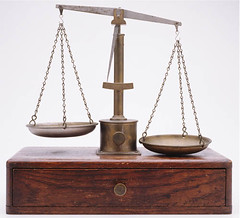The Structure and Rules of High Low Games
One of game aspects requiring standardization in rules is pot split in situations when the amount of chips in the pot makes the split quite inconvenient. I offer you method in my humble opinion the best:
1) The best variant is when by the rules an extra chip is awarded to a specified player.
 And not when this player is forced to split it especially if such split leaves an extra chip of smaller value in the pot anyway. Minimum face value (meaning that smaller chips cannot be split) must be mentioned in the rules as well. Usually it will be minimal chip used for ante or in blinds.
And not when this player is forced to split it especially if such split leaves an extra chip of smaller value in the pot anyway. Minimum face value (meaning that smaller chips cannot be split) must be mentioned in the rules as well. Usually it will be minimal chip used for ante or in blinds.
2) In case of split between high and low combinations the extra chip is awarded to the high hand.
3) If two or three hands are equal in the same direction and one of them has won in the other, the pot is initially split in two.
Extra chip is awarded to the high part no matter if this part is taken by one or several players. The half of the pot where there were equal hands is split among players as even as possible. If the pot split can be made easily then there are no problems but if the extra chip is left then it is awarded to the player sitting closest to the button because his word is first. Each player can’t be awarded more than one extra chip, so if there is hand equality the players in early positions will get one chip each depending on how many extra chips there are.
Previously I recommended to leave aside the extra chip residual after the split between high and low combinations in order to find out whether there will be another extra chip in the second split or not and use this chip in the second split as necessary. Still I think this is the right method but obviously this opinion contradicts major players’ opinion about who deserves this extra chip.
My suggestion is not used in public card rooms but you can think about using it in your home games. The main advantage of this concept is the simplicity of use.
In some card rooms the “on the left from the button” rule is not used when awarding the extra chip after the second split. The player’s highest card is used for this instead. The usual method is to use the highest card in case of equality in high combinations and the smallest card – in low. After observing problems of the dealers which use this method, we begin to understand immediately that any other method is quite better.
Main principles of Omaha hilo split game structure
 In Omaha split street and blind structures the major principle is to get rid of chips of small value, because their presence slows down any pot split.
In Omaha split street and blind structures the major principle is to get rid of chips of small value, because their presence slows down any pot split.
The game structure working well in Omaha eights-or-higher (as well as in usual Omaha) is two $5 blinds on the left from the button with possible enter for $10 or $20. This principle works well in pot-limit games and with $10-20 limits. Such game format is preferable in a game with $1, $2 and $5 blinds because the lack of $1 chips simplifies pot splits and fastens the game.
The main function of good rule set for Omaha eights-or-higher is fast game. Omaha is a game slower than holdem since twice more cards are dealt and players need more time to understand their possibilities.
Besides that hi-lo game is slower than the ordinary one because a lot of pots have to be split. That’s why gaming houses should limit face value of chips allowed in the game. I will never allow anybody to enter the game and bring in new chip face value.